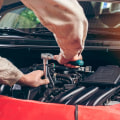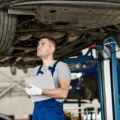Car repairs can often feel overwhelmingly expensive, leaving many vehicle owners wondering why a seemingly simple fix comes with such a hefty price tag. The cost of repairing a vehicle is influenced by several factors, including the complexity of modern automotive technology, the price of replacement parts, labor expenses, and overhead costs associated with running a repair shop. With advancements in vehicle manufacturing, cars are now equipped with intricate electronic systems, sensors, and computerized components that require specialized knowledge and equipment to diagnose and repair. This complexity means that mechanics need continuous training and access to sophisticated tools, both of which contribute to the overall cost of repairs.
Advanced Technology and Diagnostic Complexity
Modern vehicles are far more advanced than their predecessors, integrating features like adaptive cruise control, lane departure warnings, electronic fuel injection systems, and hybrid or electric powertrains. While these innovations improve safety, efficiency, and performance, they also make repairs more complicated. Unlike older cars, where a simple mechanical adjustment could resolve an issue, modern vehicles often require computer diagnostics to identify faults accurately. These diagnostic tools are expensive, and auto shops must invest in updated software and equipment to service a wide range of makes and models. The necessity of advanced diagnostics alone can significantly drive up repair costs, especially when dealing with electrical or sensor-related problems.
Expensive Replacement Parts and Supply Chain Issues
Another major reason why car repairs are costly is the price of replacement parts. Many components in modern cars are made from specialized materials designed to be lightweight and durable, which can increase their production costs. Additionally, certain parts, such as electronic modules, transmissions, and catalytic converters, are inherently expensive due to the materials and technology involved in their manufacturing. Supply chain disruptions can further inflate prices, as global shortages and transportation delays affect the availability of essential components. Auto repair shops often have to source parts from manufacturers or distributors, and in cases where original equipment manufacturer (OEM) parts are required, the costs can be even higher.
Labor Costs and Skilled Technicians
The cost of labor is another significant factor in car repair expenses. Skilled mechanics undergo years of training, certifications, and hands-on experience to diagnose and fix automotive issues correctly. Their expertise comes at a price, as they must be compensated for their specialized knowledge and ability to handle complex repairs. Unlike general labor jobs, automotive repair requires a deep understanding of mechanical, electrical, and computerized systems, making it a high-skilled profession. Additionally, shops must cover employee wages, benefits, and ongoing training programs, all of which contribute to the overall cost of repairs. The more time-consuming or intricate a repair job is, the more expensive it will be, particularly when dealing with engine overhauls, transmission replacements, or electrical system failures.
Shop Overheads and Business Expenses
Running an auto repair shop involves significant operational expenses, which are factored into the cost of services. Rent, utilities, insurance, diagnostic tools, and employee salaries all contribute to the overhead costs of maintaining a repair facility. Shops also need to invest in updated equipment, ensuring they can service a wide variety of vehicles. In addition, many repair businesses work with suppliers and logistics companies to obtain necessary parts and materials, sometimes requiring commercial fuel delivery to keep their operations running smoothly. All these expenses must be covered to ensure the shop remains profitable while providing high-quality service to customers.
Warranty, Liability, and Quality Assurance
Auto repair shops are responsible for the work they perform, which means they must guarantee quality service and provide warranties on parts and labor. If a repair is not done correctly, it can lead to liability issues, requiring shops to invest in insurance coverage to protect themselves from potential claims. Additionally, shops that prioritize quality workmanship often use high-quality parts and hire experienced technicians, ensuring repairs last longer and reducing the likelihood of recurring issues. While this commitment to excellence may increase costs, it ultimately benefits vehicle owners by preventing further damage and costly repairs down the road.
The Importance of Regular Maintenance
While the high cost of car repairs can be frustrating, regular maintenance can help prevent expensive breakdowns. Routine services such as oil changes, brake inspections, fluid top-ups, and tire rotations can extend the lifespan of a vehicle’s components and reduce the risk of major failures. Neglecting maintenance can lead to more extensive and costly repairs in the long run, making preventive care a worthwhile investment.
Ultimately, the cost of car repairs reflects the complexity of modern vehicles, the expertise required to fix them, and the operational expenses associated with running a repair shop. While prices may seem high, they are often necessary to ensure vehicles remain safe, reliable, and efficient. Understanding these factors can help vehicle owners appreciate the value of professional repairs and make informed decisions about maintaining their cars properly.


